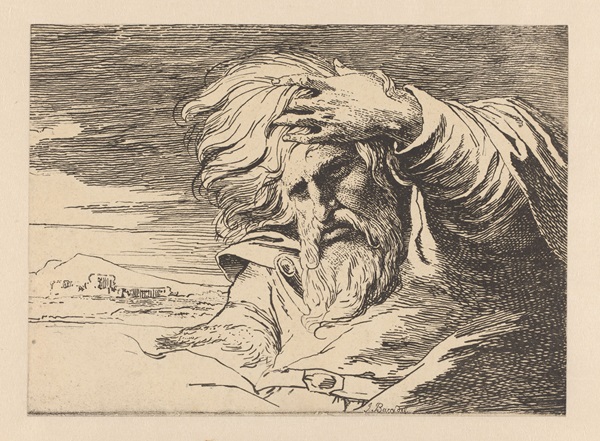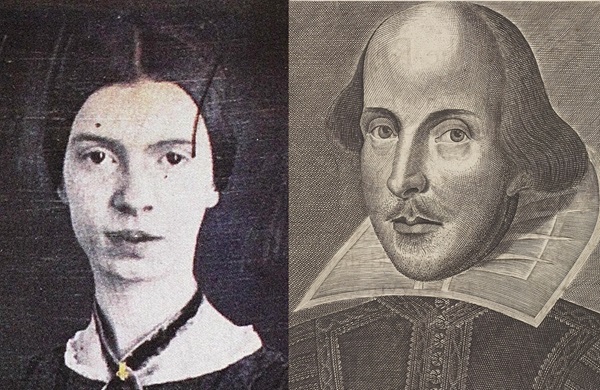He hasn’t been canonized, but I think of Michelangelo as a sort of saint. William Shakespeare, too. And Emily Dickinson, Sergei Rachmaninoff, Frank Sinatra, Beethoven, Aretha Franklin and Chaucer.
I have no idea how saintly any of these people were in terms of living a moral life. They certainly weren’t saints like St. Francis of Assisi or St. Thérèse of Lisieux.
Nonetheless, they have enabled me to connect with God on a deep spiritual level. They were artists, and, in their art, they reached beyond the everyday — they reached out into the transcendent, into the mystery that is the Divine.
God has a great many ways to touch me. Through people, of course — my family, my friends, anyone whose path I cross. Through the Bible and its lessons, through the church and its teachings and the sacraments. Through nature and the cosmos.
An unofficial sacrament
Art, for me, is an unofficial sacrament. I suspect I’m not alone in feeling this. Art of whatever kind is a very special way that I can get a glimpse of God, that I can stretch and be touched by God.
Think of Michelangelo’s fresco on the ceiling of the Sistine Chapel in which God, with a big, thick beard, is reaching out with one finger to touch the outstretched finger of the naked Adam.
In creating this image, Michelangelo wasn’t copying something he’d seen in nature or on the streets of Rome. He was using his imagination to picture a way of communicating this moment of creation. He pushed his mind and spirit and talent beyond the known, and, in doing so, he took the risk of creating.
And he created an image that has resonated with believers and non-believers alike for more than five hundred years. It’s an image that seems to capture not just the story of Adam’s creation but also the way God stretches to touch me throughout my life.
Expressing what can’t be said

I am a big fan of Shakespeare’s play King Lear in which an elderly monarch tumbles from the height of power because he acts like a bully and can’t tell his enemies from his friends. He learns much about himself and how to love, but this is a play without a happy ending.
Shakespeare went deep inside himself and his lifetime of experiences to create this tragedy that deals so profoundly with what it means to be human. He pushed himself to delve into that mystery. And every time I see the play, I get new and deeper insights into myself and everyone else who’s human. And, in gaining these insights, I gain insights into God who created us all.
All of art is aimed at expressing what can’t be expressed, to say what can’t be said.
Find new ways to communicate

Emily Dickinson and William Shakespeare
When Aretha Franklin sang or Frank Sinatra, they pushed their talent to go where other performers weren’t able to go — to find new ways to express emotions and experiences, ways that went beyond what words could communicate.
When Rachmaninoff wrote his Piano Concerto #2 In C Minor around 1901, he was working to put into the notes and melodies his own feelings and experiences. And, from the moment I first heard the concerto, it expressed my own feelings and experiences with the mystery of living — which is the mystery of who I am and how I connect with God.
The composers, writers, singers and artists living today are doing the same thing. By stretching themselves and their talents, by risking to find new ways into the riddle of life, they help me understand myself and the rest of humanity and our daily dance with God.
A quiet counterpoint on his mandolin
When my brother-in-law Steve died, we had a memorial service for him, remembering him as a conscientious objector during the Vietnam War, as a fierce environmentalist and as a guitar player who loved music.
At two points in the service, his two sons and one of his college friends strapped on their guitars to play songs he loved while his nephew Sean provided a quiet counterpoint on his mandolin.
Sean is a professional bluegrass musician who can really let it rip on stage. But here, at this moment, he was fitting his music behind, underneath and around the guitars. He was providing grace notes, as it were, to their main melodies.
And that seems saintly
And I was struck by the humility of his playing, and the aptness of it. He was stretching his talent not out but in. He was finding a way to enhance the music of the less polished guitar-players.
It was as if, in creating this musical setting, he was expressing without words how God was holding the guitar-players and everyone at the service and Steve in the palm of God’s hand. I doubt Sean thought of it in those terms, but that’s how I experienced it.
Sean, like Michelangelo and Shakespeare and all the artists of the past and all to come, was finding a way to say what couldn’t be said. And that seems saintly to me.
Patrick T. Reardon
4.18.24
This essay originally appeared at National Catholic Reporter on 3.23.24.
Written by : Patrick T. Reardon
For more than three decades Patrick T. Reardon was an urban affairs writer, a feature writer, a columnist, and an editor for the Chicago Tribune. In 2000 he was one of a team of 50 staff members who won a Pulitzer Prize for explanatory reporting. Now a freelance writer and poet, he has contributed chapters to several books and is the author of Faith Stripped to Its Essence. His website is https://patricktreardon.com/.
